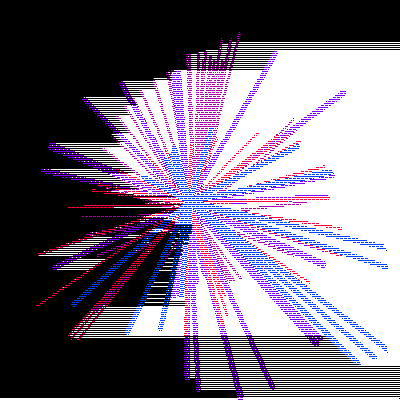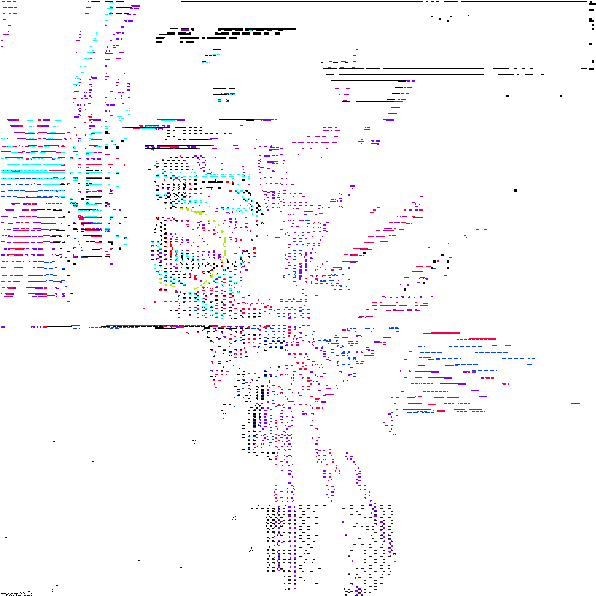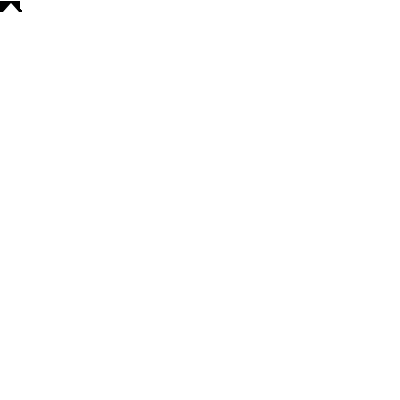For me, as an artist trying to figure out something interesting to do with a computer in the mid-to-late-'90s, Jeremy Blake was the competition. (He won.) There wasn't much actual critical dialogue around his work, though. Blake died a few years ago, and now Michael Connor, as curator, is doing some post-mortem chin-scratching in the course of keeping the Blake myth fires burning by grouping Blake with current young Blakes. As a witness to history and the MSPaint road not taken, I hurled this Solo Jazz cup of cold water in response to Connor's Blake essay currently up on Rhizome:
The Fahrenheit 451 connection is intriguing -- a '60s vision of abstraction-as-dystopian-mass-entertainment is certainly an interesting jumping-off point for a '90s body of work. As one who watched Jeremy Blake's career from the start I'd say he hit it around '98 with Bungalow 8, depicting transparent walls of a modernist apartment sliding in and out of each other - and then it was all downhill, as his work became "pure" abstraction (such as what appeared in Paul Thomas Anderson's film Punch Drunk Love), and then the later narrative, collage-y stuff, which was the least successful work he did (except in the commercial/exposure sense). Liquid Villa was essentially a repeat of Bungalow 8, with what seemed to be gratuitous Mediterranean stylings.
One quibble with this essay is the use of "prosumer" at the end. One reason Blake was able to distance himself from new media (or what was then still often being called "computer art") was that no one in the art world knew anything about the programs or effects he was using and he didn't talk about it. The "prosumer" dialog that you've identified with artists such as Michael Bell-Smith is all about "look what we did with this or that program that mid-level professionals use." Blake's work would have benefited from that kind of demystification at any stage. Instead it was treated as some kind of mysterious painted video that emerged from the mind of a genius.
Not that anyone asked, but here's what I wrote about Liquid Villa in 2001, discussing a Tim Griffin-curated group show:
"Only two of the artists make direct, hands-on use of the computer. Conjuring post-human exercise videos, Asymptote Architecture's looping, slowly morphing pod-shapes on small display screens combine machine curves, body contours, and textures scanned from athletic apparel. In Jeremy Blake's DVD light-show-in-a-box, pulsating color field patterns alternate with views of a synthetic Mediterranean villa, as if to say that inside the computer, it's all just planes and colors. Both artists favor the sleek airbrushed look typical of commercial digital work and display their pieces on pricy appliances such as wall-mounted plasma screens and Apple G-4 hard-drives; this is fine, but the danger of embracing the dominant economy's techno-fetish is that (as Joseph Kosuth once said of painting) one also embraces 'the tradition that comes with it': consumption, fascination, waste."



